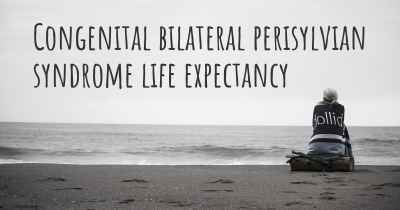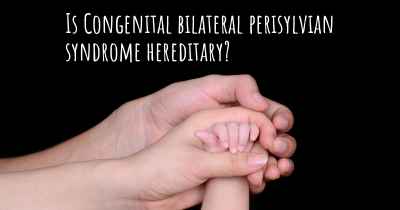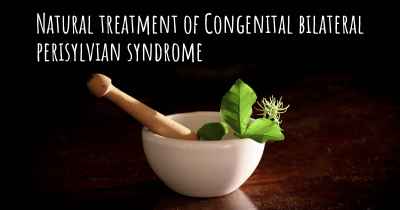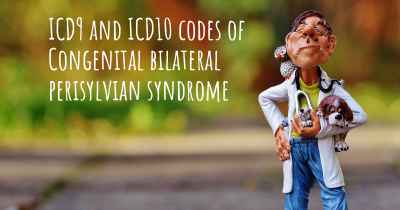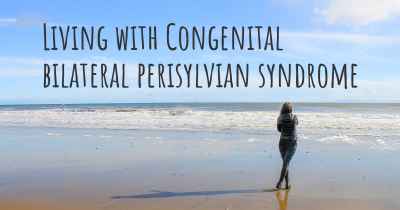Congenital bilateral perisylvian syndrome diet. Is there a diet which improves the quality of life of people with Congenital bilateral perisylvian syndrome?
Are you aware of a diet that can improve the quality of life of people with Congenital bilateral perisylvian syndrome? Is there a diet that is suggested to avoid when having Congenital bilateral perisylvian syndrome? See if there is a diet that can improve the quality of life of people with Congenital bilateral perisylvian syndrome, recommended and to avoid food when having Congenital bilateral perisylvian syndrome
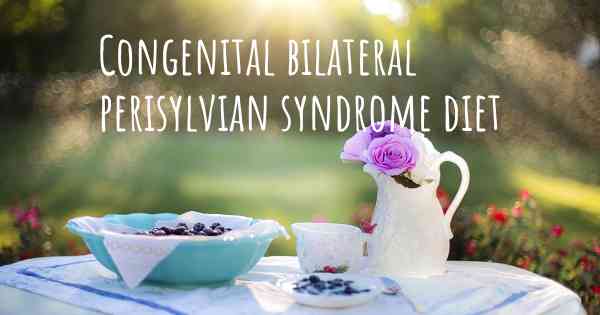
Congenital Bilateral Perisylvian Syndrome Diet
Congenital Bilateral Perisylvian Syndrome (CBPS) is a rare neurological disorder that affects the development of the brain, particularly the perisylvian region. This condition can lead to difficulties in speech and language, as well as motor and cognitive impairments. While there is no specific diet that can cure or treat CBPS, a well-balanced and nutritious diet can play a crucial role in improving the overall quality of life for individuals with this syndrome.
The Importance of a Balanced Diet
A balanced diet is essential for everyone, but it holds particular significance for individuals with CBPS. Proper nutrition can support overall health, boost the immune system, and provide the necessary nutrients for optimal brain function. A well-planned diet can also help manage any associated conditions or symptoms that may accompany CBPS, such as epilepsy or swallowing difficulties.
Key Nutrients for CBPS
While there is no specific diet plan for CBPS, focusing on certain nutrients can be beneficial:
- Omega-3 Fatty Acids: These essential fats are known to support brain health and cognitive function. Good sources include fatty fish (salmon, mackerel, sardines), flaxseeds, chia seeds, and walnuts.
- Antioxidants: Foods rich in antioxidants can help reduce inflammation and oxidative stress in the brain. Include plenty of colorful fruits and vegetables, such as berries, leafy greens, and bell peppers.
- Protein: Protein is crucial for growth, repair, and development. Include lean sources of protein like poultry, fish, legumes, and tofu in the diet.
- Fiber: Adequate fiber intake promotes healthy digestion and can help manage constipation, which is common in individuals with CBPS. Whole grains, fruits, vegetables, and legumes are excellent sources of fiber.
- Vitamins and Minerals: Ensure a varied diet that includes a wide range of fruits, vegetables, whole grains, and lean proteins to obtain essential vitamins and minerals. If necessary, a healthcare professional may recommend specific supplements to address any deficiencies.
Considerations for Swallowing Difficulties
Some individuals with CBPS may experience difficulties with swallowing, known as dysphagia. In such cases, it is important to modify the diet to ensure safe and efficient swallowing. This may involve:
- Texture Modification: Foods may need to be pureed, mashed, or thickened to make swallowing easier. Consult with a speech-language pathologist or a registered dietitian for guidance on appropriate textures.
- Consistency: Liquids may need to be thickened to reduce the risk of aspiration. This can be achieved using commercial thickeners or under the guidance of a healthcare professional.
- Positioning: Eating in an upright position and maintaining good posture during meals can aid in safe swallowing.
Individualized Approach
It is important to note that every individual with CBPS is unique, and their dietary needs may vary. Consulting with a healthcare professional, such as a registered dietitian, can help develop an individualized nutrition plan based on specific needs, preferences, and any associated medical conditions.
Other Considerations
In addition to a balanced diet, other factors can contribute to the overall well-being of individuals with CBPS:
- Hydration: Staying adequately hydrated is essential for overall health and can help manage constipation. Encourage regular fluid intake throughout the day.
- Mealtime Environment: Creating a calm and supportive mealtime environment can help reduce stress and promote enjoyable eating experiences.
- Feeding Assistance: Some individuals with CBPS may require assistance with feeding. Ensure appropriate support is provided to meet their needs.
- Regular Monitoring: Regular check-ups with healthcare professionals can help monitor growth, nutritional status, and address any concerns or changes in dietary needs.
Disclaimer: It is important to consult with healthcare professionals, such as a registered dietitian or a medical doctor, for personalized advice and guidance regarding the specific dietary needs of individuals with Congenital Bilateral Perisylvian Syndrome.
Posted Aug 20, 2017 by Momof2miracles Jess Sundquist 4256
